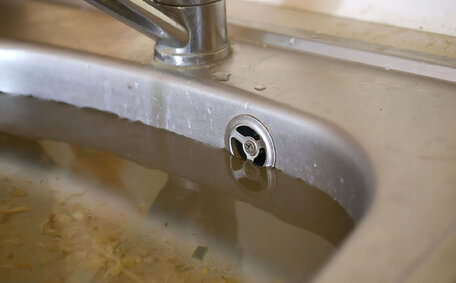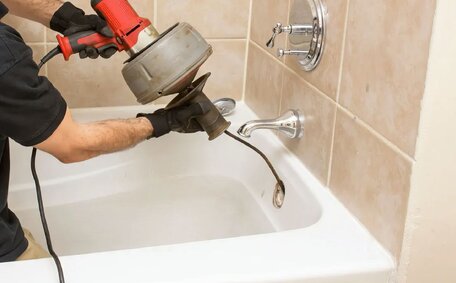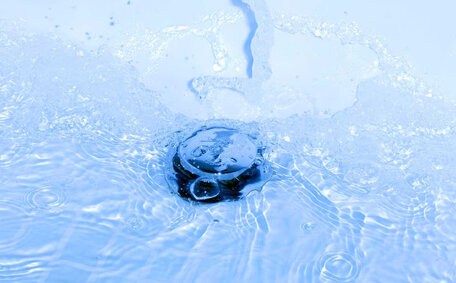Introduction to using a plunger on blocked drains
A blocked drain, often resulting from food scraps and various obstructions, is a frequent and potentially harmful plumbing problem. Discover how to clear a drain with a plunger tailored to blockages like hair, grease, or debris, ensuring the plunger type fits the drain perfectly before beginning.
As a cost-effective, readily available tool found in most homes, trying a plunger can unblock drain clogs and get your sink back in order, saving time and money compared to immediately using harsh chemical treatments. This guide offers insight on how unblock drains with a plunger, its effectiveness, and explores further solutions for persistent issues.
Manual methods such as plunging not only protect your plumbing system but are also more environmentally friendly.
Choosing the right type of plunger
Selecting the correct plunger type is critical when manually unclogging a drain due to the varying drain designs. Three main plunger variations cater to different drains in kitchens and bathrooms:
- Sink plungers feature a flat, oval-shaped rubber cup ideal for forming a tight seal over sink drain openings. They work best when used to clear clogging issues in bathroom, kitchen, and laundry sinks.
- Toilet plungers have a large, funnel-shaped cup with an extended flange designed to fit fully into toilet bowls and pipes to dislodge obstructions.
- Accordion or flange plungers use a pleated, flexible flange to fit snugly into fixtures of varying shapes and sizes like shower and tub drains.
Employing a toilet plunger for a sink or the other way can damage fixtures and is ineffective for clog removal due to improper force. Always follow manufacturer instructions to protect fixtures when using drain cleaning tools, including commercial-grade plungers.
Choose a plunger with a cup shape that provides a snug fit over the drain, as a proper seal is crucial for effective unclogging.
Different Plunger Types Explained
- Sink plungers feature a broad, flat rubber cup designed to form a tight seal over basin, sink and tub drains. The oval cup targets force directly into your sink, ensuring a proper seal for optimal plunging efficiency.
- Toilet plungers use a large, funnel-shaped rubber flange capable of extending deep into toilet bowls and traps to dislodge clogs.
- Accordion or flange plungers have a flexible, pleated rubber flange which fits into fixtures of varying shapes and sizes like shower stall or laundry tub drains.
Choosing the correct plunger ensures directed pressure is applied where needed, effectively targeting blockages in your drain. Always check drain shapes and sizes before plunging to match the appropriate cup style and size.
Matching plunger to drain
When attempting to clear clogs manually, it’s vital to match the right type of plunger with your specific drain.
- For sink drains, use a flat sink plunger. Ensure the rubber cup seals tightly over drain opening to maximise suction power and clog removal.
- Select a flanged toilet plunger to plunge toilet bowls and traps. The funnel shape matches toilet contours.
- Accordion plungers suit shower, tub and laundry drains. Adjust the pleated flange to fit drain shapes.
Step-by-step guide to using a plunger effectively
- Select the appropriate plunger for addressing a clogged drain of a specific type and size, particularly for your shower drain. Sink plungers for kitchen sink, accordion plungers for tub/shower drains, toilet plungers for toilet bowls.
- Wearing gloves is recommended for hand protection from contaminants during plumbing tasks.
- Lay a towel at the fixture’s base to catch any splashes.
- Ensure the plunger cup is properly seated over the drain for a watertight seal before attempting to clear blockages.
- Fill the basin, tub, or toilet enough to submerge the plunger, ensuring an optimal seal for clearing the blockage.
- Position hands on the plunger handle a few feet apart to exert downward force as you can get better leverage.
- Use assertive, swift movements, channeling force straight into your plughole, aspiring to loosen the obstruction.
- Apply ample force to push through debris that may get stuck a few inches down the drain.
- Persist with the action for several minutes to clear out any obstructions before reevaluating the drain’s flow.
- Take breaks, then pour water down drain and ensure the plunger stays submerged.
After using these techniques, wear goggles for eye protection against splashes, and clean the plunger thoroughly to maintain hygiene in your kitchen and bathroom.
Getting set up
- Clear the area around the drain opening by removing any standing water or debris.
Creating an airtight seal
- Position the plunger directly over the drain opening, ensuring the rubber cup encircles the drain and seals tightly with no gaps.
- Angle the plunger slightly to allow some compression of air and water inside the cup as you push down. This compression aids in forcing the clog free.
- Consider this tip - pour down some water into the sink to facilitate effective plunging. For toilets, ensure at least an inch remains from previous flushes.
Plunging techniques
- Ensure the plunger cup covers the drain opening completely and press down to achieve an airtight seal.
- Employ rapid, straight up-and-down motions, moving the plunger 3-4 inches each way to disturb the clog.
- Take short breaks to refill the sink or toilet bowl so the plunger stays submerged.
- Continue plunging in brief intervals, repeating the process until the clog loosens, and cautiously attempt to extract stubborn debris.
- Stay safe by wearing goggles during plunging to protect eyes from splashes.
Always use caution - overzealous plunging with excessive force can harm fixtures.
Other Solutions for Difficult Blockages
Should plunging be ineffective for persistent obstructions, consider these alternative DIY solutions before seeking professional help:
Boiling water
Carefully pour boiling water down the drain to dissolve oily residues, hair, and soap buildup, being mindful of potential splashing. Take safety precautions against splash back before pouring.
Baking soda and vinegar
Combining 1 cup of baking soda with white vinegar initiates a vigorous reaction, effective in fragmenting organic clogs. Pour the mix directly down the drain, let it sit, then flush with hot water.
Drain snakes
Drain augers, operated by a hand crank, are sturdy tools that guide a cable through pipes to catch and pull out blockages. Ensure you match snake size to pipe diameter to avoid scratches.
Avoid harsh chemical drain cleaners
Although some commercial drain cleaners are potent, they contain harsh substances like caustic soda and should be handled as cautiously as other household chemicals. Try safer methods first. If used, take precautions by wearing gloves and avoiding mixing products.
Browse our guide to discover how to help prevent chronic or extensive drain blockages, or call a plumber to inspect pipes and employ high-pressure jet or suction equipment.
When to call a professional plumber
It’s important to recognise when DIY drain unclogging methods fall short and professional assistance becomes necessary.
Signs that indicate professional assistance is required include:
- Water draining very slowly from sinks, tubs or showers
- Multiple drains are clogged throughout your home
- Unusual gurgling sounds coming from pipes
- Strong sewage odours around drains
- Overflowing water around drains
- Presence of drain flies clustering around drains
If you’re not cautious when attempting to use an auger or cable, it could potentially damage your pipes. Our licenced plumbers use state-of-the-art equipment to clear obstructions, such as invasive tree roots, thoroughly while preventing pipe damage.
For chronic, extensive or complex drain issues, call the experts at Hornsby Plumbing on 1300 349 338 or email us to schedule an appointment.
Our skilled technicians employ high-pressure jetting, powerful augers, and specialised camera inspections to resolve severe clogs accurately. In rare cases of pipe collapse or failure, we offer comprehensive drain repair solutions.






